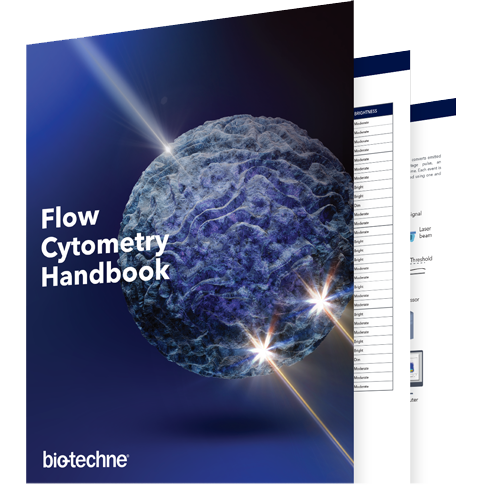What Are Secondary Antibodies?

Secondary antibodies are useful tools that can help increase the effectiveness of a variety of experimental methods including Western blot, immunohistochemistry (IHC), flow cytometry, and ELISA. They are generated by immunizing host animals with antibodies from a different species. The antibodies that are generated recognize and bind to the immunoglobulin (Ig) domain of the immunizing primary antibody and assist in purifying, sorting, and detecting target antigens. Secondary antibodies are typically conjugated to a label. The downstream application will determine the conjugation state and choice of label of the secondary antibody.
Selecting Secondary Antibodies
Secondary antibodies are selected based on several different factors. Since the secondary antibody needs to recognize and bind to the primary antibody, the secondary antibody needs to be specific for the primary antibody’s host species and isotype (e.g., IgG or IgM). Additionally, the secondary antibody should be conjugated with the most appropriate label for the application it is being used in. For example, Western blot and IHC can use secondary antibodies conjugated to either chromogenic or fluorescent molecules, while flow cytometry generally uses fluorescently labeled secondary antibodies.

Search Bio-Techne Secondary Antibodies
Search Secondary Antibodies by Reactivity
Search Secondary Antibodies by Isotype
Search Secondary Antibodies by Conjugation
Advantages of Using Secondary Antibodies

Indirect detection of target analytes using the combination of primary and secondary antibodies offers multiple advantages over directly detecting the proteins using only conjugated primary antibodies.
• Amplifies the Signal
Multiple secondary antibodies can bind to a single primary antibody. Each bound secondary antibody is conjugated to a reporter molecule. This results in an amplification of the signal and an increase in the sensitivity of the assay. For some assays, the signal can be increased further using a biotinylated secondary antibody and the streptavidin-conjugated reporter molecule.
• Allows for Multiplexing Experiments
Since secondary antibodies are species specific, experiments can be designed to detect multiple analytes using primary antibodies derived from different species. The different analytes are detected using secondary antibodies conjugated to fluorochromes that emit light at different wavelengths.
• Preserves the Paratope
Conjugating a primary antibody to a reporter molecule has the potential of compromising its antigen-binding site, also called its paratope. This would reduce the primary antibody’s ability to bind to its target antigen. Using a conjugated secondary antibody allows an experimenter to use an unconjugated primary antibody in their assay.
Associated Products
VisUCyte™ HRP Polymer
VisUCyte™ HRP Polymer
Bio-Techne’s VisUCyte HRP Polymer Antibodies eliminate the need to use Avidin-Biotin detection chemistry, thus providing cleaner and faster IHC staining of your tissue.
Cell & Tissue Staining Kits
Cell & Tissue Staining Kits
Bio-Techne’s Cell & Tissue Staining Kits are ready-to-use kits that contain all the reagents needed for IHC staining of tissue sections and cytospin preparations.
Isotype Control Antibodies
Isotype Control Antibodies
Isotype control antibodies are negative controls that help researchers interpret their results. Bio-Techne offers a wide range of isotype control antibodies to match the species, isoform, and conjugation of your primary antibody.
Additional Resources
Secondary Antibodies Handbook
Secondary Antibodies Handbook
This handbook offers information you need for choosing the best secondary antibody for your experiment.
Flow Cytometry Handbook
Flow Cytometry Handbook
This easy-to-follow guide provides an overview of the flow cytometry technique, as well as step-by-step protocols and troubleshooting tips.
Immunohistochemistry (IHC) Handbook
Immunohistochemistry (IHC) Handbook
This comprehensive guide provides an introduction to the techniques, protocols, and troubleshooting methods that lead to a successful IHC experiment.






